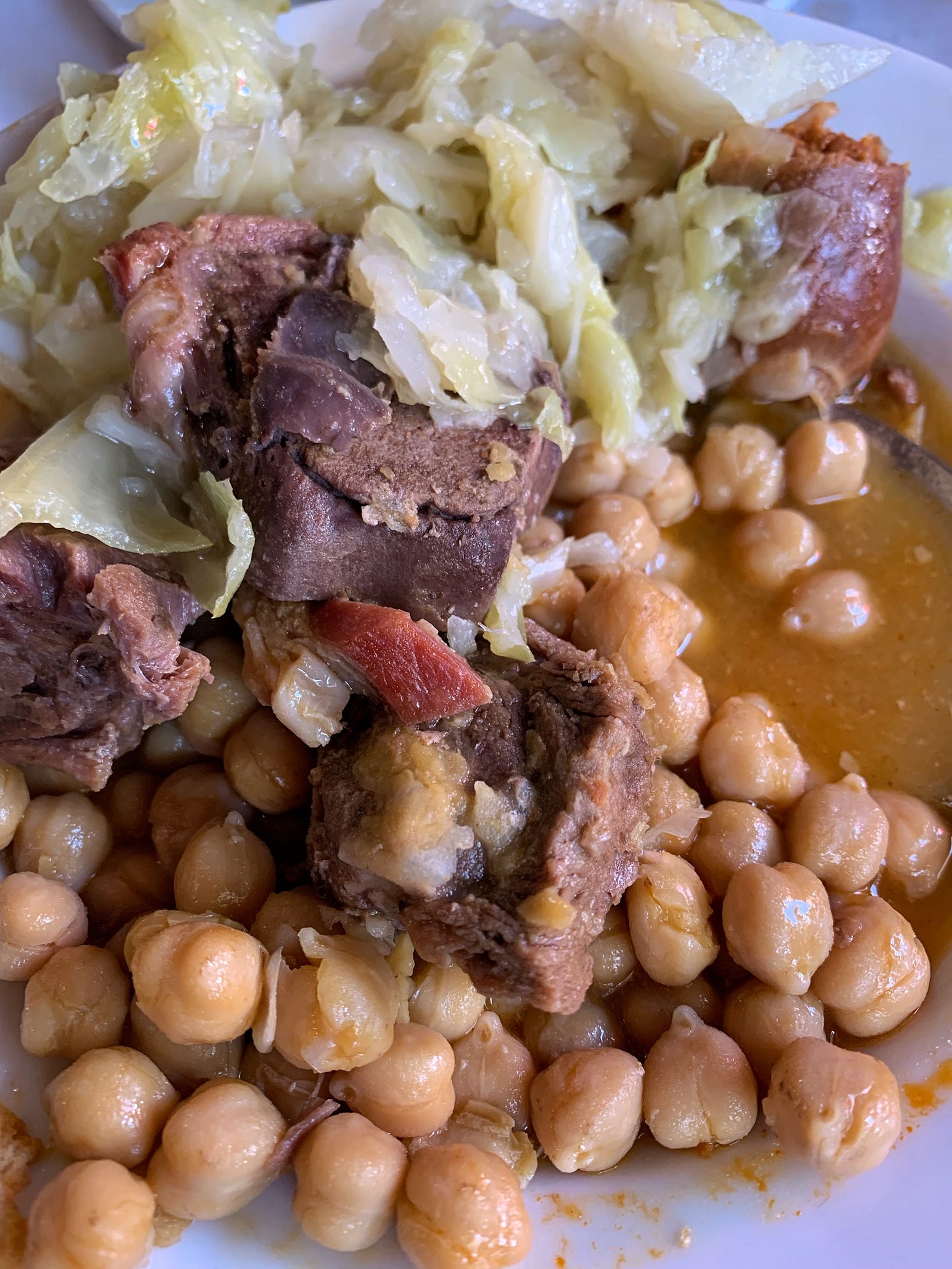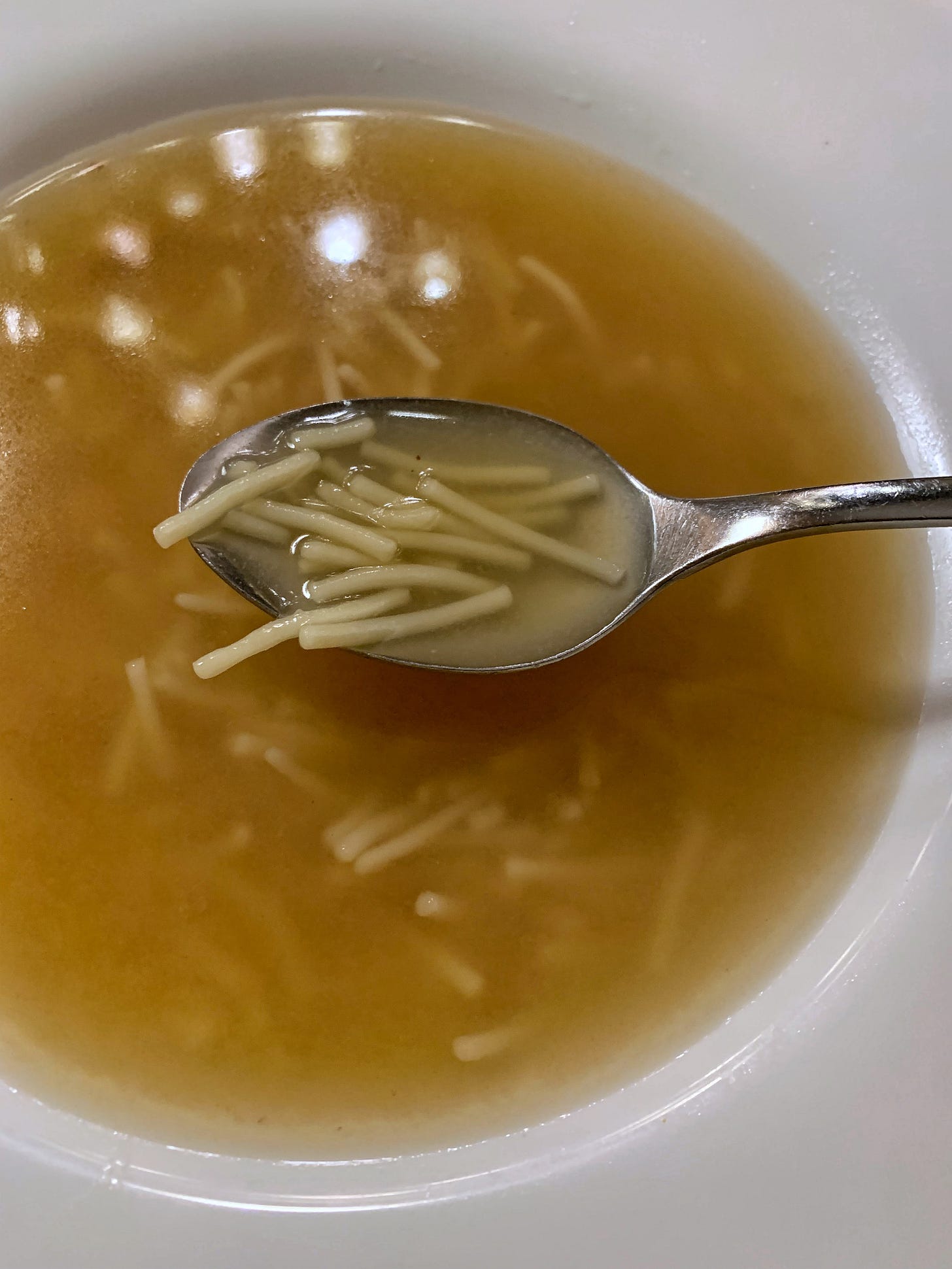A note before today’s newsletter: Starting this week (okay, last week technically) and continuing until the end of January, Come como Kiki will drop down to a weekly newsletter. With the holidays here and things at work ramping up, I’m adjusting my publishing schedule to what I feel like I can reasonably commit to at this point. Based on the poll from a few weeks ago, you guys are most interested in the dedicated Wednesday posts, so for now Friday Favorites is taking a break. This is not to say that one may not pop up at some point over the next couple of months, but I would rather underpromise and overdeliver, instead of the opposite. Sunday Sobremesas will continue as usual (every other Sunday) throughout the holidays!
Hi, hello, and happy Thanksgiving Eve to my fellow Americans! This time of the year may mean turkey, stuffing, and cranberry sauce across the ocean, but here in Spain cooling temperatures are associated with a different kind of meal that will make you so full that you can’t move for three hours after eating: cocido madrileño, or just cocido for short. Of course, Thanksgiving isn’t actually celebrated in Spain (unless you count Black Friday sales), but something about eating spoonfuls of hearty cocido on a blustery fall day makes me think of the holiday.
Cocido madrileño1 is a type of stew that’s traditionally cooked in an olla de barro, or earthenware pot, over several hours.2 The main ingredients usually3 include the following:
Chickpeas
Potato
Carrot
Repollo (cabbage)
Acelga (chard)
Tocino (similar to panceta)
Ham
Chicken
Beef
The special thing about cocido is the fact that it is served in at least three vuelcos (courses): first the broth with small noodles called fideos, next the chickpeas and vegetables, and finally the meats and embutidos (sausages, in this case the chorizo and morcilla).
Like all cuisines, Madrileños take their cocido seriously. One of my favorite websites about the stew is the simply named Cocido Madrid. It describes itself as a página de un grupo de amigos que desde hace más de 10 años se reúnen cada mes para degustar un cocido madrileño (page by a group of friends who have gotten together every month to enjoy cocido madrileño for over 10 years). The website is an ever-evolving in-depth ranking of the best cocidos in the province. What makes the site special (and useful) is that the authors visit any given restaurant multiple times, so you can read about small detalles (details) like if the chickpeas were slightly more al dente compared to usual this time around.
If you hop over to the website, you’ll see that the top-ranked restaurant is Charolés in El Escorial. Up until a couple of months ago I had never heard of the restaurant, but I must have been living under a rock because as soon as I told one of my best friends here that David and I were going to eat cocido in El Escorial she responded, “You’re going to Charolés, aren’t you?”
Charolés is not for the faint of heart, even for an experienced cocido consumer like myself. As mentioned, cocido is traditionally served in three courses, but at Charolés they tout nueve—yes, NINE—vuelcos. In fact, the cocido is such a spectacular that they only serve it three days a week: Mondays, Wednesdays, and Fridays. A couple of weeks ago we took a Friday off and decided to try it ourselves.

I know you want to hear about how amazing the cocido was—and it was exceptional—but what stood out to me was the potato. Te lo juro4, I have never had such a delicious boiled potato. It was arguably the best potato I’ve eaten in my life, or at least the most memorable because who remembers a potato out of nine courses of food? The silky texture, the savory flavor, the perfect amount of salt—this was the potato I had unknowingly been waiting for my entire life. I could have eaten only that potato and left the restaurant happy.

Of course, there was more waiting for us after the potato (which was served at the beginning of the meal with chorizo). In fact, here are all the vuelcos that we ate that day, which if you count them individually (as the restaurant does) add up to thirteen:
Sopa de cocido (broth with the fideo noodles)
Chickpeas (served with cumin-spiced tomato sauce on the side)
Potato and carrot
Cabbage
Sauteéd chard
Ham knuckles
Bone marrow
Beef ribs
Morcilla
Chorizo
Tocino
Relleno5 madrileño (stuffing with bread crumbs, egg, garlic, and herbs)
Chicken
One would think that after eating your body weight in meat and chickpeas you would be finished, but no—then they bring you a salad at the end. For digestive purposes, naturally.
Along with Charolés, my other favorite place for cocido (and one that I’ve been to many times) is La Bola in the center of Madrid. While Charolés may win the cocido war in meat variety and potato tastiness, I actually prefer La Bola in terms of overall experience. The fideos there are more a mi gusto6 (in my opinion they were a bit overcooked at Charolés), and the restaurant gets extra points for the cozy vibe emitted by the dark wood and window seats. La Bola also holds a special place in my heart since it was the first place I ever ate cocido, back in 2015.
Cocido is traditionally served in the fall and winter (hence my association with Thanksgiving), although you can find it year-round in certain restaurants. I’m all for breaking food traditions, but only eating cocido in cooler weather is one that I stand by. It’s a dish that llena mucho7, and the thought of eating it on a sweltering summer day does not bring up good thoughts.

Last weekend we went to a friend’s house to eat homemade cocido, a tradition that he has every year to celebrate his birthday. Gathering around a table surrounded by friends, sharing food and wine and stories and laughter—it felt like an American Thanksgiving. At the risk of sounding cursi8, the experience made me truly thankful, for my life, my experiences, my friends, and my family.
Wishing you and yours a day of happiness, togetherness, and excellent food, no matter where you are in the world. Comments are open, so feel free to let me know how you’re spending the next few days (even if it has nothing to do with Thanksgiving) below!
Un abrazo enorme9,
Ki
On cocido madrileño: Like many dishes in Spain, cocido is regional and has different versions. The one I talk about here is the one traditionally made and served in Madrid.
On cooking cocido: These days home cooks usually prepare it in regular cookware, or even a pressure cooker.
On cocido ingredients: Of course, not all cocidos are the same. Some include additional vegetables like thistle and green beans, and the cuts of meat may vary somewhat.
Te lo juro: I swear to you
Relleno: Stuffing. See, just like Thanksgiving!
A mi gusto: To my liking
Llena mucho: Fills you up
Cursi: Cheesy/corny
Un abrazo enorme: A huge hug







¡Excelente, Kiki!! And I agree with you, it will take some 3 hours until you can just walk again! Hahaaa Great post, as always! 😃👏
I loved learning about this dish!